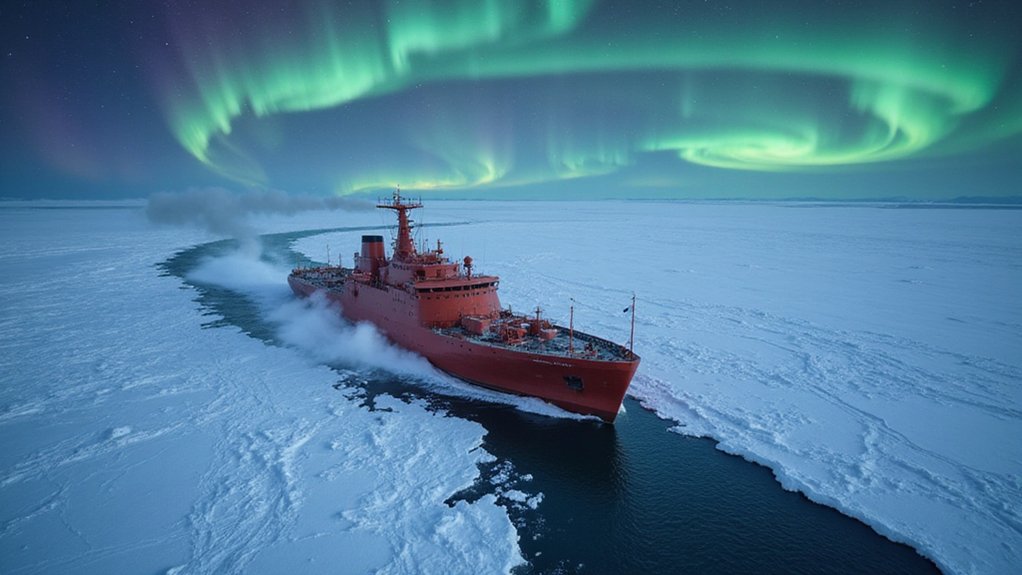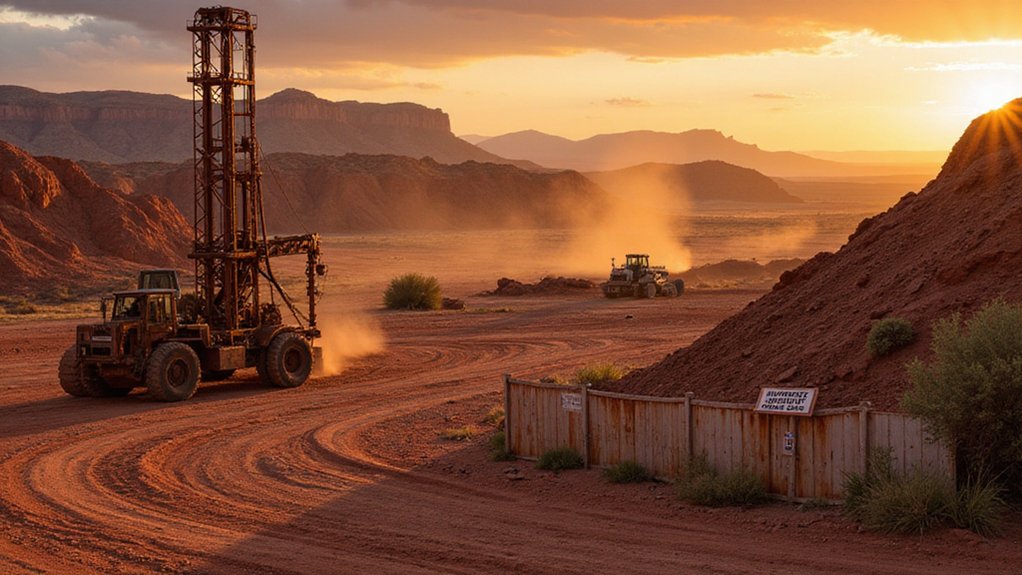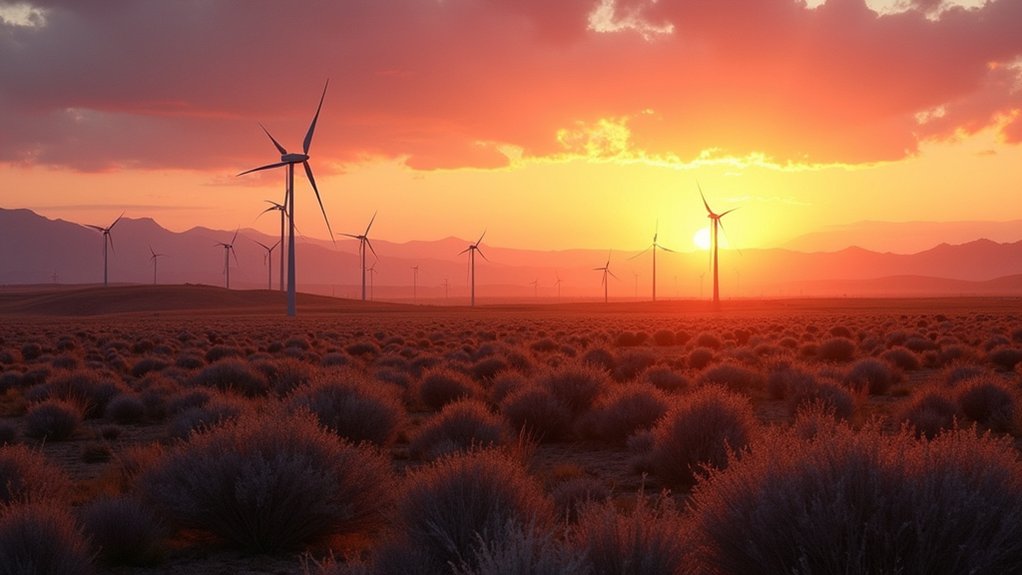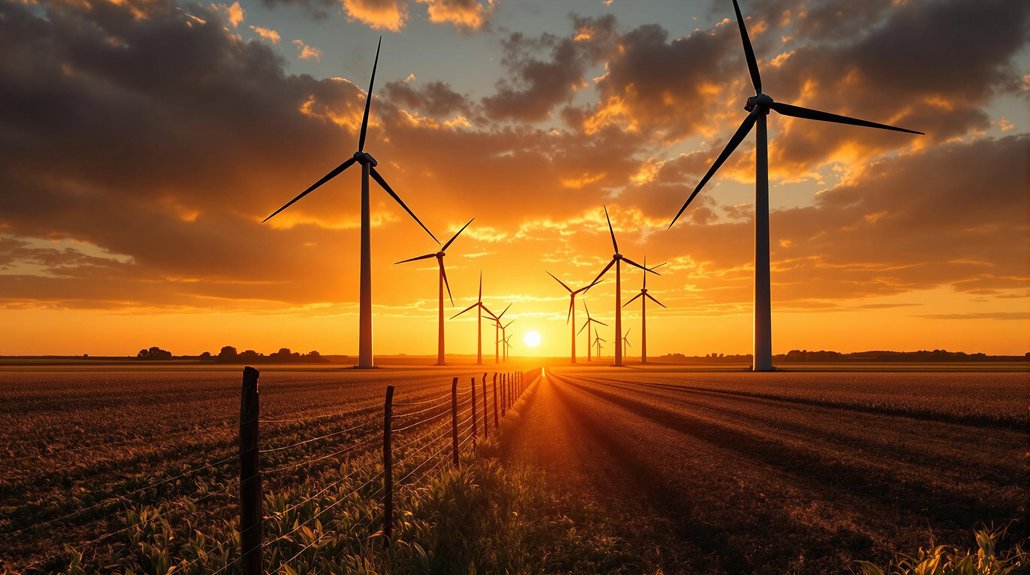While the rest of the world debates nuclear power‘s future, Russia is building reactors in the Arctic like it’s going out of style. The numbers tell the story: from 62 reactors to 81 in just five years. By 2035? They’re shooting for 118.
The Arctic isn’t exactly prime real estate, but Russia doesn’t care. They’ve got eight nuclear-powered icebreakers cutting through frozen seas, with seven more on the way. The Northern Sea Route moved 36 million tons of cargo last year. That’s up from a measly 4 million tons in 2014. By 2035, they’re expecting 270 million tons. Nuclear power makes it all possible. Unlike geothermal energy, which faces geographic limitations in its deployment, Russia’s nuclear strategy can be implemented anywhere in their vast Arctic territory.
Russia’s not subtle about their ambitions. They’re planning five new nuclear plants in the Arctic with up to 16 reactors. Their floating nuclear power plant, the Akademik Lomonosov, just reached one billion kilowatt hours. It’s been powering 60% of western Chukotka since 2020. Rosatom says they need at least fifteen more floating plants. Because apparently, one nuclear reactor bobbing in Arctic waters isn’t enough.
The newest toy in their arsenal? The icebreaker Rossiya, revealed in May 2025 with its RITM-400 reactor. It’s the world’s most powerful nuclear icebreaker. They’re also developing small modular reactors, with the first one expected by 2028. These aren’t your grandfather’s reactors. They’re designed for extreme Arctic conditions and potential export. Russia’s nuclear fleet already generates 223.4 TWh annually, representing 19% of the country’s total electricity generation.
Here’s where it gets uncomfortable. Russia’s testing nuclear-powered, nuclear-armed weapons in the Arctic. The Burevestnik cruise missile and Poseidon torpedo aren’t exactly confidence-inspiring neighbors. This dual-use technology blurs the line between civilian and military applications.
Environmental groups like Bellona are watching nervously. More reactors mean more accident risks. Russia’s nuclear legacy in the Arctic remains unresolved, and cleanup projects might be grinding to a halt. Getting reliable information from Russia? Good luck with that.
The Arctic holds trillions of cubic meters of natural gas and billions of tons of oil. Traditional energy sources won’t work in these remote locations. Nuclear power fills the gap. Rosatom runs both the nuclear operations and the Northern Sea Route, consolidating power in ways that would make other countries nervous.
References
- https://world-nuclear.org/information-library/country-profiles/countries-o-s/russia-nuclear-power
- https://www.world-nuclear-news.org/articles/russias-floating-nuclear-power-plant-passes-one-billion-kwh
- https://www.sustainability-times.com/energy/russia-deploys-floating-nuclear-beast-new-75-megawatt-reactor-powers-worlds-largest-icebreaker-through-arctic-fury/
- https://carnegieendowment.org/russia-eurasia/politika/2024/10/russia-arctic-nuclear-threat?lang=en
- https://bellona.org/news/arctic/2025-01-nuclear-risks-in-the-russian-arctic-during-the-war-in-ukraine








